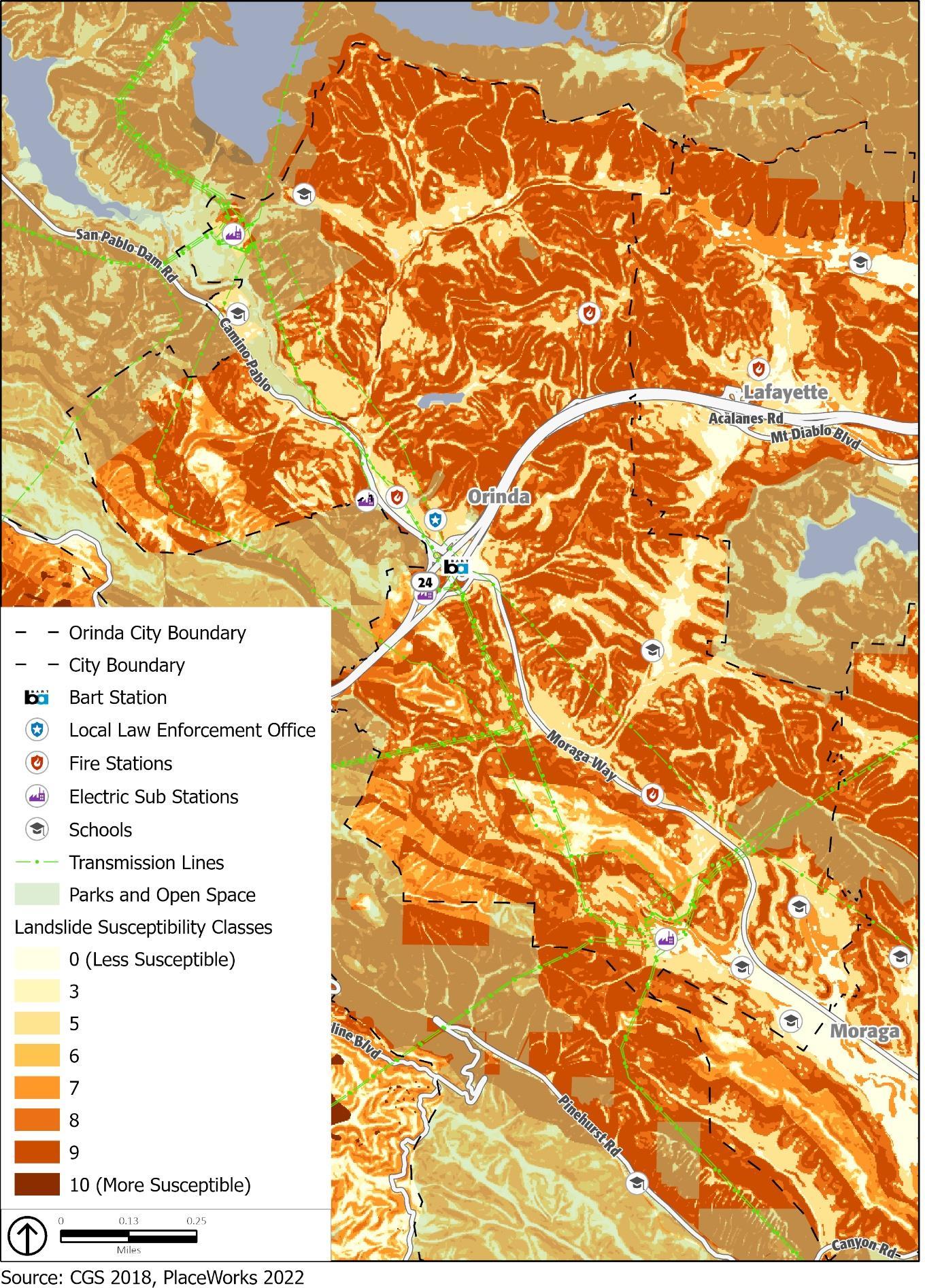
2 minute read
Figure 7 Landslide Susceptibility
FIGURE 7 LANDSLIDE SUSCEPTIBILITY
Past Occurrences
Orinda is in a region of high seismicity with numerous local faults nearby. While major earthquakes are rare in Orinda, minor earthquakes occur more often. The San Andreas Fault, the fastest-slipping fault along the Pacific and North American Plate boundary, has caused earthquakes of magnitude 7.8 and 7.9 in the past, including the 1906 San Francisco earthquake. In 1989, the Loma Prieta earthquake, which also originated along the San Andreas Fault, produced a magnitude 7.2 earthquake. The earthquake caused extensive damage and created a seven-county major disaster area, including Contra Costa County.
Landslides, however, are a common occurrence and are the primary physical process that shapes the topography in the city. Landslides have occurred on hillsides throughout the city and generally occur in winter during high precipitation years. In 2005, the City of Orinda declared local emergency after $1.053 million in damages occurred as a result of storms during middle- to late-December. The storms caused mudslides onto public roadways throughout the city. Additionally, there were reports of tree, landslides, flooding, and sewer break damages at 22 private properties.
In 2008, the Zander Drive landslide reactivated 10 years after residential development encroached onto lands underlain by the landslide, resulting in $2 million in property damages. The landslide measured 200 feet across, extended 1,000 feet from Zander Drive down to San Pablo Creek, and had a maximum depth of 115 feet. Three properties were impacted, two homes were demolished, and the City purchased and remediated one of the properties because it was deemed too expensive to maintain. According to CAL Engineering and Geology Inc., the landslide is at least 1,000 years old. In previous years, it was active in the winters of 1969-70 and 1982-83 before sliding again in 1998. To ensure that the hillside along Zander Drive will withstand another slide, the city shored up and will continue to maintain the dirt at the bottom of the wall rather than constructing new retaining walls.
In 2012, a series of significant winter storms affected the county during late November and early December. The second storm happened on the first and second of the month, with the third and final storm on December 5th. During heavy rainfall, 69 properties with downed trees and landslides were reported to City’s Public Works Department from December 2 through December 5.
In 2017, a winter storm event caused major damage in Orinda, including property damages in the city that amounted to approximately $3 million. Storm damages included downed trees, flooding, and landslides.



